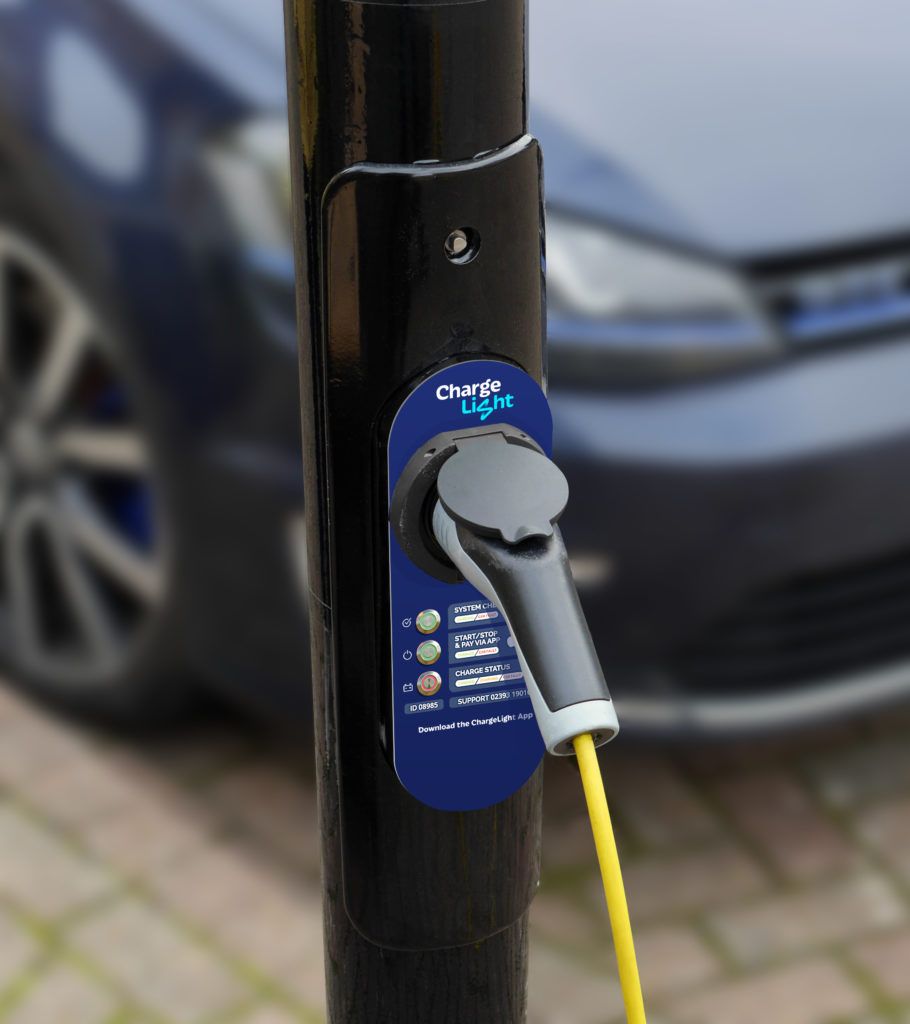The embodied carbon in a lamppost electric vehicle (EV) charger is up to 88% lower than in a standalone charging pillar, according to a study carried out by carbon measurement experts Sustainability Analytics.
The transition to electric vehicles is an essential part of the UK’s move to net zero, as is the rollout of the charging infrastructure necessary to support it. The government’s EV Charging Infrastructure Strategy published earlier this year, highlighted that between 300,000 and 700,000 public charge points need to be installed by 2030. Building this network will create a carbon footprint which the government’s strategy does not address, but will be determined by the choice of technology solution adopted by local councils.
Until now, no studies have analysed the difference in emissions between different types of charging solution, particularly between lamppost chargers such as ChargeLight’s and newly created charging pillars.
Therefore, this study was commissioned by UK based lamppost chargepoint operator, ChargeLight, in order to quantify exactly how much carbon is saved each time a lamppost charger is installed ahead of a conventional charging pillar. The report which is entitled ‘Analysis of embodied carbon in on-street residential EV charging stations‘ is available to view here.
The results show that:
● The embodied carbon in a charging pillar is between 4 and 8 times greater than in a lamppost charger.
● On the basis that there are at least 300,000 lampposts nationwide suitable for retrofitting for charging purposes, choosing this option over the installation of new charging pillars would mean avoiding at least 110,000 tonnes of carbon dioxide emissions, equivalent to 900,000 petrol car journeys from London to Edinburgh.
● Lamppost chargers come with the additional benefits of being:
○ Lowest cost option
○ Most equitable solution
○ Quickest to install
○ Less street cluttering
According to the research, embodied carbon in lamppost chargers is kept low through the re-purposing of existing infrastructure.
ChargeLight is calling for embodied carbon to be included as a central criterion in government funding decisions relating to charging infrastructure, including in the Office for Zero Emission Vehicle‘s application of the new Local Electric Vehicle Infrastructure (LEVI) funding.
Tom Pakenham, MD of ChargeLight, said: “This study shows not only that lamppost charging is by far the lowest carbon solution for on-street charging infrastructure, but it also underlines why embodied carbon should be a much higher priority consideration for government funding bodies and corporate entities when selecting technology solutions.”
Henry le Fleming, Founder of Sustainability Analytics, added: “The resource requirements for new charge pillars is much higher than using the existing sources of on street electricity, so it is no surprise that building new pillars will cause more carbon emissions. This is an opportunity to build low carbon charge points for electric vehicles.”
Image courtesy of ChargeLight.
The inaugural Transport + Energy Forum – takes place on 17th November at the Birmingham Conference & Events Centre and will focus on immediate steps that need to be taken to decarbonise now. The draft agenda can be viewed here.















